“Difference of opinion is what makes horse racing.” It’s an adage that holds true today as much as a hundred years ago. Racing without debate, heated or not, wouldn’t be the same. Controversial these days are Merit Ratings, a big debating point being how the official handicapper arrives at his ratings. Here are some ideas, writes Karel Miedema.
What is Handicapping
Handicapping is the art of bringing horses together, and making fields competitive. A ‘good’ handicap is all about perception. The question which must be asked: “What do people think before the race?” A ‘good’ handicap is when there are plenty of runners in the field, and no short-priced favourite. An open race. How do we arrive at the weights for such a race? The official handicapper must work on the assumption that most horses are inherently consistent, and reproduce their best form for periods at a time – if not all the time.
How is it applied
By measuring what is regarded as normal form, and expressing it in a figure, horses can be matched against each other and the playing field be levelled. The measure the handicapper uses is weight. Each horse has a Merit Rating (MR), an assessment of the ability shown on the track. The Merit Rating is expressed in half-kilos.
Horses with the same MR are assumed to have similar ability. Each Merit Rating point equals half a kilo. Merit Ratings are calculated by comparing the performances of horses in a race. One horse beats another. The difference in lengths between the two can be translated in half-kilos, using a formula which has stood the test of time. It is important to understand that a length has different weight equivalent over different distances. That makes sense, as it becomes more difficult to carry weight the further the distance. Carrying a water-bucket once round the block may be fine, but the second lap will tax your muscles, slow you down.
One extra kilo weight in a sprint has far less effect than one kilo in a staying race. It may sound strange that the performance of a horse weighing 500kg, who carries a jockey and saddle weighing some 50kg, can be influenced by changing the weight carried in the saddle by a single kilo. This is because the spine of a horse acts in unison with its stomach muscles, creating what is in effect a bow and string effect. Stomach muscles affect the stride. More pressure on the ‘bow’ asks for more effort by the horse to stride freely. A little extra weight goes a long way to make things more difficult.
How is it measured
The conversion table used by a typical handicapper will look something like this.
Distance…1 length equals half-kilos 1000m …. 4 1600m …. 3 2000m …. 2 2400m …. 1
or the other way round:
Distance…1 half-kilo equals.lengths 1000m …. 1/4 1600m …. 1/2 2000m …. 3/4 2400m …. 1
So: On average one kilo equals one length over a mile, but less in a sprint, and more over ground. Think: In a slow run race it becomes easier to carry weight, and the ‘slowing down effect’ of weight should be adjusted to compensate. That is why knowing at what pace a race is being run is important.
Where do you start
Horses come into any race with an existing Merit Rating (how the base or start-up rating is arrived at will the subject of another article). The distance of the race is fixed, so the handicapper knows what weight value to use for one length. Now when the race is run the horses will beat each other by a certain number of lengths, which can be translated into half-kilos using the formula. If all horses carry the same weight, then calculated difference from lengths-behind into half-kilos will equal the difference in Merit rating between the horses.
For example: Horse A and B race over 1600m; both carry the same weight; Horse A beats Horse B by 2 lengths. The two lengths difference is the equivalent of 4 half-kilos – Horse A therefore puts up a performance 4 Merit Points superior to Horse B. Now the handicapper looks at the Merit Ratings as they were before the race. He checks: was Horse A’s Merit Rating beforehand also 4 points higher than the one of Horse B? Chances are it won’t be exactly the same, but it should be close. Now comes the task of adjusting the rating. If the ‘before’ and ‘after’ MR’s weren’t the same, how should they be adjusted – if at all?
To make that decision the handicapper MUST look at the ratings of ALL horses in the race, not just those of A and B. Most commonly, he will look for the performance of a horse that finished within a few lengths of the winner and whose recent form has been consistent and reliable. That becomes his KEY HORSE, the horse whose rating is used as a benchmark.
Give me an example
A good example of this is the performance of Free My Heart when he beat Jet Master over 1600m at Clairwood. In the July panel discussion Paul Lafferty was highly vocal about the fact that he didn’t think Free My Heart had been properly ‘penalised’, and that he should have had his Merit Rating increased by six instead of the two Merit Rating points the handicapper raised his rating by.
If the reasoning of taking a line through Jet Master is used, then Free My Heart’s rating should have been increased to at least the level of Jet Master’s rating. That’s what the race showed. Now for the crunch: if Free My Heart’s rating is raised to that level, then the ratings for all other runners in the same race must follow suit – they are, after all, linked together through the lengths-behind-the-winner calculation. In this case it meant that not only Free My Heart’s rating would have gone up dramatically, but those of most other runners in the race as well! Forget it.
So what’s the answer
The only logical conclusion was that Jet Master probably ran below best, and should not be used as the key HORSE. The handicapper decided, in this case, that the more likely candidate for key honours was third finisher Glamour Boy. If Glamour Boy ran to his ‘normal’ form, then most of the horses in the field appeared to do the same. Free My Heart’s Merit Rating increase was therefore based on beating Glamour Boy, not on beating Jet Master.
A sound decision. This example illustrates what is probably the most common mistake made by us. We assume that when a horse wins a race it automatically must have its merit Rating increased, be penalised. Wrong. IT ALL DEPENDS on the key HORSE. The winning horse could well have won easily and run below his rating, in which case it would be wrong to increase its rating. If a penalty for winning was given automatically, then it could be that several of the beaten horses might also have to go up, because of their lengths-behind-the-winner relationship.
Making sense?
In handicapping there’s no such thing as a penalty. Re-assessment to achieve optimum competitiveness – that the name of the game.
Don’t forget: the handicapper rates ALL races, not just handicaps. After each and every race he attempts to achieve a ‘best fit’ for the Merit ratings of all horses in the race, not just for the winner or the first two home. Over time, the handicapper will build up a history of each horse, a solid background to its apparent ability shown on the track. So when you see a short-priced favourite in a handicap race (where the handicapper has set the weights to give every horse the same chance of winning), pay attention.
Either the handicapper has slipped up, or – much more likely – the market is wrong. Often you can use that knowledge to your benefit. The Ability Ratings (AR) in Sporting Post are calculated in much the same way as the official Merit Ratings. Sometimes opinions concur strongly, sometimes they differ – either way useful betting opportunities arise. Keep your eyes peeled.
Have Your Say - *Please Use Your Name & Surname*
Comments Policy
The Sporting Post encourages readers to comment in the
spirit of enlightening the topic being discussed, to add opinions or correct
errors. All posts are accepted on the condition that the Sporting Post can at
any time alter, correct or remove comments, either partially or entirely.
All posters are required to post under their actual name and surname - no anonymous posts or use of pseudonyms will be accepted. You can adjust your display name on your account page or to send corrections privately to the Editor. The Sporting Post will not publish comments submitted anonymously or under pseudonyms.
Please note that the views that are published are not necessarily those of the Sporting Post.
36 comments on “A Matter Of Merit (1) – Merit Ratings & How They Work”
Leave a Reply
‹ Previous
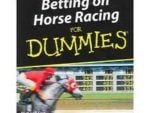


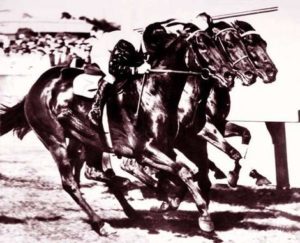
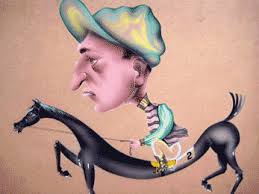

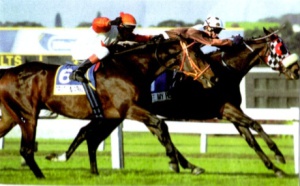

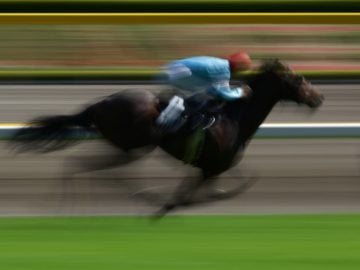
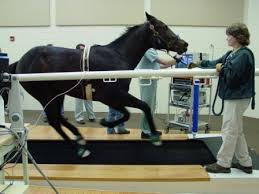
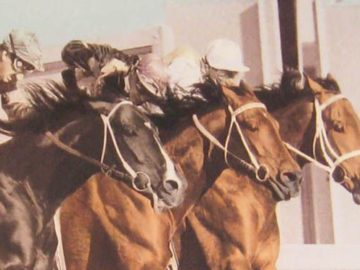

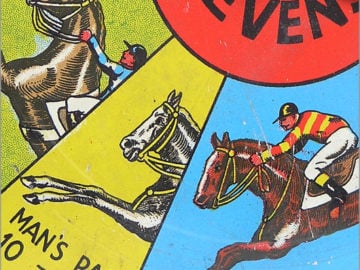






QUESTION PLEASE DIFF BETWEEN MR RATING AND FM RATING
explain FM rating?
It is surely wrong that we have a handicap system that is undefined!
I have read your articles on handicapping and the definition you prefer is that MR is the “innate ability of the horse” which you further explain as “you either have it or you don’t”- I’m not sure if that is your own definition or as defined elsewhere but it makes sense to me!
However,what makes no sense at all then,because, based on that definition,we do not apply the MR system in South Africa.
eg.There is a horse ,who is only 3(MIA CULPA),who has earned a MR of 78 (run 4/8/16) and yet ran off a 46 at Turfontein,on Tuesday night(a mere 6 months later) ….and that in a short career of 15 runs!
So which figure represents his innate ability?… because they can’t both be right.
But this is not an isolated case ….I would guess that over 50% of horses are running off less than their highest ever rating,by anywhere between 2-30 llbs!
The system surely then needs a makeover as,if the majority of horses are running off a rating that fails the definition of that system,the system is clearly broken.
The only solution seems to be a MR for innate ability (reduced only if a rating was clearly an error) and a RR (raceform rating) which changes with every run(as existing)
The existence of 2 ratings might also be a good guideline to assist the regulators to keep a better eye on the “running on merit” rule, which they have never enforced!
Still no answer diff between FM RATING AND MR RATING
FM is FMR, or Form Merit Rating, from Charles Faull’s now defunct publication Form Turf Guide.
MR is Merit Rating, the official NHA handicappers’ rating.
TFR is the English company Timeform’s rating, the world’s most respected.
RPR is the English Racing Post’s rating (also the rating of the English company Raceform, which is part of the Racing Post stable of publications)
AR is Sporting Post’s Ability Rating.
All these ratings are variations on a theme – that of handicapping through the evaluation of weight carried, beaten lengths, and age.
THANK YOU INDEED
No one asking why a MR goes down? Or at the very worse why a MR goes down by more than max 3 kilos ( 6 MR points) clearly no trainer is worth being called a trainer if the performance of his horse keeps deteriorating?? Now you end up with huge MR drops just for a trainer to be rewarded for being useless… that surely opens the door for corrupt results and corrupt showings in a race just to manipulate these MR’s to a state where a horse can easily win once his true ability MR has been hidden sufficiently to 1 person deciding what his MR should be…
Stamp out these corrupt showing by not allowing a MR to drop by more than 3 kilos and let trainers be judged on their ability to train, not their ability to hide form. We use 2 indicators worth gold to any handicapper BAMRAL = Best average MR adjusted lengths behind and BAT = BAMRAL combined with AT Adjusted time. This shows in perfect detail by lengths how bad some of these results are and why the public is moving to fairer grounds when wanting to take a bet… let’s save the sport we love before we are back to 100 years ago where only trainers/owners raced one another without any public interest..
Thanks Sean
Plse add your surname for the record
“We use 2 indicators worth gold to any handicapper BAMRAL = Best average MR adjusted lengths behind and BAT = BAMRAL combined with AT Adjusted time. This shows in perfect detail by lengths how bad some of these results are and why the public is moving to fairer grounds when wanting to take a bet… let’s save the sport we love before we are back to 100 years ago where only trainers/owners raced one another without any public interest..”
Sean, who are the “we”? And what exactly are you attempting to explain in the above statement? How about laying out your data and result for inspection.
@Mr Sean…
In principle, I believe you are 100% correct. The willy-nilly procedure of how the handicapper brings ratings down is beyond a joke, it’s the flaw in the system.
A rating goes up in a way similar to a human athlete clocking better and better times. And for humans and horses, it’s not about winning that affects the time or the rating. Your best time could be attained in defeat, point that escapes many horsemen with regards ratings.
But to your point, it’s easy to understand “up”, but down is conjecture at best, and bias at worst. I looked up conjecture and read, “an opinion or conclusion formed on the basis of incomplete information”. So yes, that.
Sport at the end of the day is built on “fairness”. If it is unfair, it collapses because the results are not true. The fatal flaw in merit ratings, in my opinion, is that the dropping of ratings is less about a new evaluation of ability based on the fundamentals like age or obvious wear-and-tear, but as a reward for failure.
And while that is patently misunderstood in the handicappers’ office where Politics is the actual name of the game, then this basic unfairness will continue to work like corruption.
But antidote isn’t painless!
This is my best comment! I should retire.
Tony Mincione
It appears that Tony is so full of conjecture he had to inspect the definition in order to complete his comment. Conjecture about conjecture is what people do in the absence of data and facts. Where’s the data to prove the “like-corruption”, Tony?
But, I’m still awaiting a full explanation of BAMRAL and BAT which should hopefully put to bed the conjecture about conjecture and highlight exactly why -6 from highest MR holds some efficacy in reducing corruption. I sense an Akrobeto moment and I am in need of a belly full of laughter!
@J August who says “Where’s the data to prove the “like-corruption””‘
No, no, matey, you don’t need data to say unfairness is like corruption.
And when horses are dropped continually till they win, and you wonder why THAT horse has to go in the stud book as a winner.
What I mean is that unfairness works like corruption does, and it seemed like a fitting comparison as we have seen the affect of both.
I enjoy that you seem to miss the point, like on purpose.
The point, by the way, is this: you don’t need rules for going up because you can measure, but you do need rules of the game for going down, because you can’t measure.
If or when a horse achieves a MR in a handicap then that particular horse should stay at that MR, with no decrease for poor performance! This will eliminate any corruption by the trainers who manipulate at will ! It will be a lot fairer on the Punter and racing public in general. IT will also reduce some of the shocking results that the punter is hammered with so consistently! It will also give the horses that deserve to win a chance to do so.
Agree with Graham Martin wrt MR. Also number of wins should be major factor, instead of “distance behind winner”. Horses could be held back as not to skew their MR while not winning a race. -Gordon Nefdt
That is why the Race figure system is the most fair an unbiased way of allocating weight. All horses get a fixed weight increase after the maiden win (3kg for example). 1x winners, 2x winners, etc. So a 2x winner will carry 3kg s more than a more than a 1x winner in a graduation type race. And so on. Take out all the BS about ability and ratings and merit and all the other nonsense. Keep it Simple, Stupid! Then all the punters will come back and start playing again, without having to use a calculator or computer and a rule book! Dump Merit rating hsndicapping where it belongs, in the dirtbin!
Good on you Michael Jacobs, well said my man! But beware , Jay August will be coming at you with all sorts of Statistics and other types of data, he will be telling you that there is no evidence of this or that or the next thing, But well said anyway!
Once again Tony tosses out fairness as though the term has an objective value which is universally known.
No, no, no, Tony. People who argue without defining terms or attempting at least an a priori truth do not argue at all. This is exactly how this industry negotiates every intellectual challenge it faces – by avoiding the hard work.
Now let’s try this again. If we need rules for going down then what are those rules. Out with them!
You cannot fault the SP commentariat for overthinking anything. Everything can be explained by n x 3.
I could agree with the ” most horses are inherently consistent” part, it’s the trainers/owners/sponsors/insiders that I am worried about…the fact of the matter is trainers are killing the industry in their quest to stay alive the trust vanish, sponsors are killing the industry in their quest to get a bigger piece of the shrinking pie, and the public are tired of being the atm for all of this so rather move to fairer grounds…if you not seeing this you are not part of the solution since you choose not to see this, but the numbers don’t lie..we are slowly moving back to 100 years ago when only trainers and owners where racing each other and the public had no interest…the test of time does full circle…
Sean Brown
Define shrinking pie please? Please don’t use your dwindling subscriber base as the yardstick. Thankfully the unsubscribe button worked the third time.
One hundred years ago 10000 people cheered in Flush of Dawn after she won the Johannesburg Summer Handicap at Turffontein. They were not racing for a beer and a hot dog in that year and there was substantial public interest. Faking the past does not explain the present.
Ai ai ai Rod not sure why the personal attack when calling a spade a spade, you where never a subscriber, if you where you would still be (we do have records), but so it seems an industry of lies would suit you quite well but I will not dwindle down to a level of personal attacks, I would rather just provide you a few articles of the shrinking pie, if you have not figured this out yet :
1) https://www.racingpost.com/news/prize-money-to-be-slashed-in-south-africa-as-betting-turnover-falls/404306
2) https://www.bookies.co.za/wp-content/uploads/2018/03/Stratecon-Report-Horse-Racing-2017-05-31_Final-Draft.pdf
3) https://www.turftalk.co.za/stakes-are-reduced-following-decline-of-revenue/
4) https://www.racingpost.com/news/prize-money-to-be-slashed-in-south-africa-as-betting-turnover-falls/404306
if you want to play, play nice and leave personal attacks at home. IPuntSmart do not ask a subscriber fee , it is FREE 4 ALL, no credit cards no nothing and we do this to help the public, no other service comes even close to our accuracy and our records clearly shows you where never a subscriber
Have a nice day Rod
Sean, you continually point out that the revenue portion (pie) that supports horse racing is shrinking. Perhaps you need to investigate whether total gambling spend on horse racing has shrunk by a similar amount, and whether gambling spend has decreased in total.
As regards being personal. Your opening gambit was to castigate trainers for the alleged impropriety of forcing the hand of the handicapper to drop horses MRs. You describe these trainers as “useless”. How was your attack on some nameless trainers any less personal?
Sean Brown, thanks for humoring me. Rather than using 2017 information or information from operators – go look at gambling board statistics – you will see that if you add all the pieces of pie that have fallen off the plate, to the crumbs on the plate, the pie has grown as if it has had some super yeast applied in the baking process.
Good on the bakers of the mulberry pie, they seem to get their ingredients from the hijacked truck.
Personal – adjective
1.
belonging to or affecting a particular person rather than anyone else.
if you believe that calling trainers as a group “useless” is personal then I guess if the shoe fits, but I was not naming any individual, but surely Jay you have come across useless in all industry and all walks of life … and normally useless do not get rewarded?
I was referring to trainers not being worth their claim on being a trainer if the horse continually deteriorates in form.. .I was not naming any unique individual , but stating that no trainer (as a group) should be rewarded for ability and performance deteriorating… that’s how most things in life works, you do not get rewarded for being mediocre , unfortunately that’s life. and I could not see where I was stipulating that trainers are forcing the hand of the handicapper to drop MR’s, I was referring to the art of handicapping in general and the art of training in general, if you allow MR’s to drop you open the door for corruption by means of hiding a horse’s real form, you also open the door to trainers not actually bringing their best to the table since… well there is no need … the MR’s can just drop again to become competitive again , if you allow MR’s to drop you open the door for questionable riding, questionable results, etc all in the name of trying to get that MR down… if it cannot go down then well that door is shut and by assumption you should get more trustworthy results
I believe I will let logic prevail and refrain from any more comments since quite frankly status quo… nothing will change so my opinions will just remain along with many others in the public and the control will remain with those in power, irrespective of the decline or reason’s for such obvious declines… bottom line is that we all love the sport of Horse Racing and I for one would love to see things change so that the spark is back and the trust is back and to do this clearly things need to change , irrespective of us getting personal on a forum regarding obvious issues in handicapping affecting public trust.
Ok, so let me get this right lest I fall foul of a personal indiscretion.
The group which I will collectively name racing data providers often make claims of great efficacy for their algo’s, systems and models, yet seldom if ever provide sufficient evidence to support their claims. Generally I find these providers to be useless in aiding me in navigating the complexity of predicting horse racing outcomes or figuring out how to exploit any edge. Be especially wary of any data provider, free or paid, alleging impropriety by others while failing to produce actual analytical evidence which can be replicated through the same or a similar data set.
Sean, are you marketing your product or simply becoming part of the political machination within the industry? Do you have a workable and viable solution to the challenge of rating drops or are you merely pointing out something which you think is irrefutable and requires no actual verifiable evidence or proofing. There are many in the industry who operate with the latter mindset. While you will become comfortable in their embrace you will not be offering anything unique or helpful to the industry, or punters.
I’m still awaiting a detailed explanation of BAMRAL and BAT, two metrics which you have asserted offer some particular wisdom. How about providing proof why these two metrics tell us something/anything about handicapping?
There is a full detailed explanation of BAMRAL as well as BAT on the Headers of each Raceday’s Ratings in a section called “Ratings Explained” . if you are interested to understand it’s workings I suggest you start there since the small space allowed in this comments section will not suffice and you can quite accurately see using those on the site when a results is very questionable if noting that all horses has the exact same chance of accumulating these BAMRAL and BAT values race by race.
BAMRAL and BAT are only 2 of the 84 rules we give every runner a chance to collect points on I may add, although they are definitely some of the stronger indicators standing alone.. Maybe I shall also mention that we cover 16 sports of which Horse Racing is a small part so I would not be “marketing” the product here on a website that only covers Horse racing , I started the conversation in the interest of the future of Horse Racing in South Africa. We also have detailed Tutorials on the youtube channel for Horse Racing as well as other sports to understand it’s workings
Also worth noting is you can go back to any previous race day to see the results vs these BAMRAL / BAT figures and by using simple logic derive when a result was a questionable one. …. extract found below but clearly the site would make it way easier to understand seeing the values…
BAM42/BAM84/BAM168/BAMC (BAMRAL)
Best Average Merit Rating Adjusted Lengths is an extremely potent indicator. It’s used to level the runner’s Merit Rating, weight, distance, and strength compared to the rest of the field. This is calculated in intervals of 0-42 Days (6wks), 0-84 Days (12wks), 0-168 Days (24 wks), and 0-252 Days (26 weeks or 8 months) to level the performance of previous races compared to the current race.
The lower the BAMRAL the better. Imagine the value ‘0’ as the fictitious finish line for the specific race conditions. Spot the big swing differences between these indicators for potential surprises at all odds. BAMC is calculated slightly different from its sibling indicators, it is a weighted average BAMRAL exponentially increasing its value with a 252 day (26 weeks / 8 months) spread. BAMC typically provides the ability to expose the gap on big swing differences and potential Form trainers may try to hide.
When a BAMRAL figure is shown in green it means that the value was obtained in the same or similar Distance Category and is a proper BAMRAL figure. If the value is in red it means that the value was obtained outside of the Distance Category of the current race.
BAT42/BAT84/BAT168/BATC (BAMRAL/ADJUSTED TIME COMBO)
BAT or BAMRAL/Adjusted Time combined is potentially our strongest indicator when standing on its own. It utilises BAMRAL, but most importantly adjusts the BAMRAL figure with the Adjusted Time achieved on that BAMRAL figure. It, therefore, levels the BAMRAL figure to the Adjusted Time achieved during that same run. Imagine the value of BAT as lengths behind or ahead of the finishing line (or ‘0’). BAT is also recorded in date intervals like its BAMRAL sibling. This tool is useful to find massive outsiders that won’t be coming in as a surprise anymore, especially for low MR rated events where Form is “hidden” as MR’s tumble down.
When a BAT figure is shown in green it means that the value was obtained in the same or similar Distance Category and is a proper BAT figure. If the value is in red it means that the value was obtained outside of the Distance Category of the current race.
Funny how quiet this comments section have become after I have given a full explanation above…
On another note I would just have to congratulate all the trainers racing at Greyville BIG raceday today 2 May 2021… when we are running for proper stakes , isn’t it AMAZING how straightforward the results can be when we all racing for stakes and not for survival?? We have had 7 races so far today with 5 favorites winning running for the BIG stakes moolah.. and the ratings have been spot on.. WELL DONE trainers… all we need is bigger stakes and you surely show your better side…
The quietness in this case is entirely due to the fact that the incomprehensibility of the full explanation was that complete that a full reply would have commanded too much time and rendered no reward.
Perfect, true that, it’s clear that it is completely incomprehensible to understand it’s workings without putting in the effort to register and access the tool before rendering reward in seeing daily examples presented to us….when an opportunity presents itself to better and save an industry from corruption with 30 minutes of effort…but alas the powers prefer strong meaningless words of nothingness…isn’t ignorance just bliss
To understand the directions of where a ship is heading, speak to it’s captains
Some dates on those articles are less than 18 months ago Rod…a lot can change in 18 months….if you use your time productively
Jay, “whether total gambling spend on horse racing has shrunk by a similar amount, and whether gambling spend has decreased in total.”
1st part of your statement makes total sense , this is perhaps not a RSA problem, but imo clearly a Horse Racing Industry problem…now just imagine if our powers that be can lead the efforts to turn this sinking ship around…Horse racing is losing it’s fair share vs other sports betting for one simple reason imo…fairness… now handicapping is an essential part of this fairness problem….would you stay in a marriage, a partnership…that’s not fair?
By not allowing a hcp to go down by more than 3 kg (6 pnts) ever in a horse’s career would answer a big part of the fairness problem and would allow ALL trainers to be rewarded for training efforts and NOT for their ability to hide form… if you want stakes to increase , 1st you need turnover to increase…if you want turnover to increase…start with the fairness problem.
100’s of our members can see daily which races was questionable by simply looking at the BAT and BAMRAL indicators…anyone can notice the lowest figures in any race…BAT calculates based on weighing previous MR vs current MR, previous weight vs current weight, going, previous AT, previous starting stall vs current starting stall adjustment ( draw bias), previous lengths behind winner, distance, class, appie claim… there is simply no better indicator to catch bogus results and daily we see a couple of these…you cannot expect people to trust a product and invest in it if these keeps appearing, simple as that, and with big data today the world is now a much more educated place so it cannot just be scraped under the table anymore like it has been for years now with meaningless excuses and big words of nothingness…if the powers is not in the mood to stay with the times and use the advanced technology in hand to save an industry then the shrinking pie will soon not need to be ruled by these powers anymore…maybe not in their lifetime…but we have more generations to come and let’s save Horse Racing from extinction and leave a heritage of fairness and equality rather than lies, deceit and excuses.
“By not allowing a hcp to go down by more than 3 kg (6 pnts) ever in a horse’s career would answer a big part of the fairness problem and would allow ALL trainers to be rewarded for training efforts and NOT for their ability to hide form… if you want stakes to increase , 1st you need turnover to increase…if you want turnover to increase…start with the fairness problem.
Sean where is your proof for such a statement? What is the magic in 3kgs? Show me irrefutable proof how this number holds any efficacy in keeping racing “fair” and gambling spend on horse racing rising.
As for BAMRAL and/or BAT, summarise the past 2-3 years actual data you have in respect of these indicators and prove through proper analysis their efficacy. I need proof in aggregate and on average. You allege your indicators identify bogus result based on bogus MRs. Prove that by detailed analysis and a laying out of the case for each indicator.
Not saying “3kg” is the magic number, quite frankly I would prefer zero kg since using the professional athlete example he get’s better not worse, but I am also trying to be “fair” to the trainers hence 6 MR points (3 kg) fr things such as injuries , etc… . as for the proof our members sees the proof daily , if you simply register you will see exactly what I mean with that , so not sure how you want me to supply you the proof if I am already supplying the proof to all our members daily , every member can go back to the last plenty number of days and see the BAT and BAMRAL figures in action jay, it’s simply a matter of effort.
Hi Sean
Searched for Bamral ratings can’t find please direct to website to get explanations , how it works Thanks
can anyone please send me Andrew Beyers books on picking winners